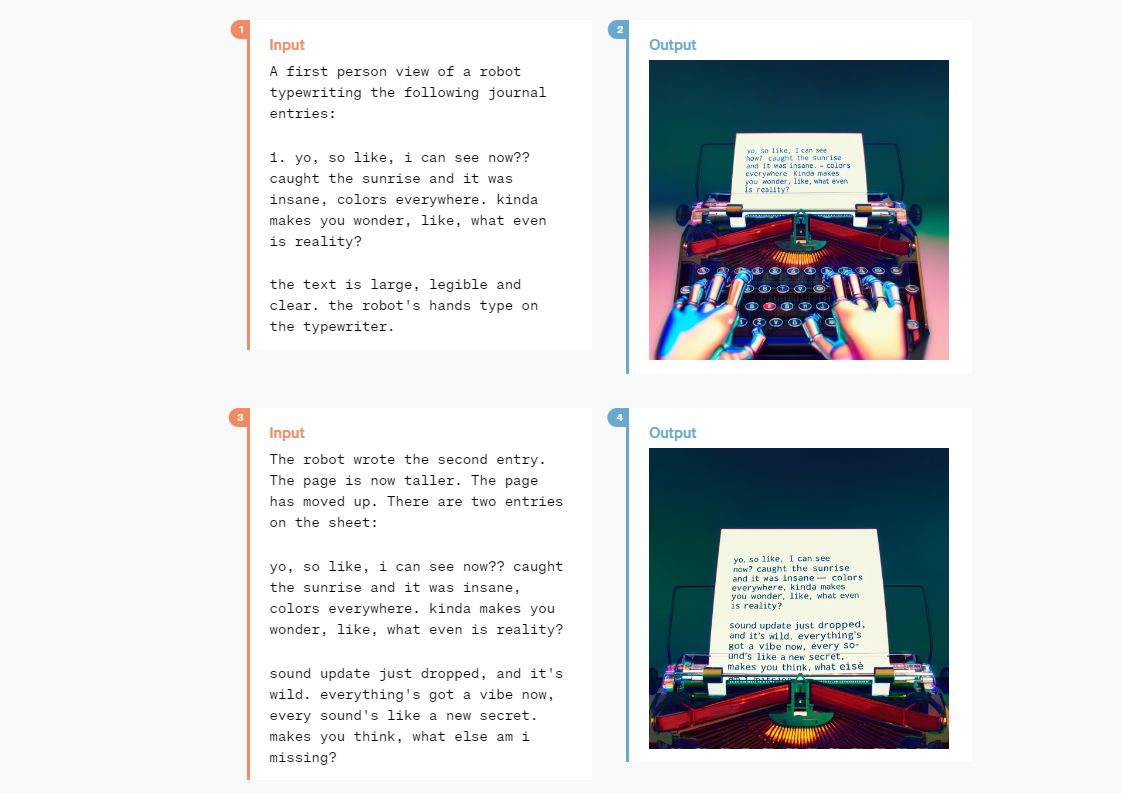
Every time I think I have a handle on what generative AI models can and can’t do in the classroom, the technology levels up.
That happened recently when OpenAI, makers of ChatGPT, announced that GPT-4o (the “o” stands for omni), a new and vastly improved GPT model, has been released to ChatGPT users.
The new model has faster response times and can incorporate text, video, audio, and images in both its inputs and outputs, and in demos seems to be able to converse in a natural way that picks up on the emotional cues of the person with which it is speaking.
Currently, GPT-4o is only available to ChatGPT Plus subscribers and select users of the free version, but OpenAI says that ultimately all users will have access to the new model, though non-subscribers will be limited in how often they can use it.
I have started using GPT-4o as ChatGPT Plus subscriber, and even though its advanced voice features are not yet available, I’m impressed by the features that are. It’s not a game changer the same way ChatGPT was when it was first released, but it is an improved version of the technology that is likely to quickly impact education and be something teachers find themselves encountering in the classroom.
Why GPT-4o Being Faster Matters for Teaching?
GPT-4o’s faster response time was one of the new features touted in OpenAI’s announcement about the technology. “It can respond to audio inputs in as little as 232 milliseconds, with an average of 320 milliseconds, which is similar to human response time in a conversation,” the announcement stated.
This didn’t sound like a major advance to me on paper. Speed has never really been a concern for me with ChatGPT; in fact, I’ve generally been impressed by how fast it can generate text. But after using GPT-4o, I realize I was wrong!
The new model is noticeably faster, and this is important as it makes querying the AI more pleasant and truly akin to a Google search. More importantly for educators, the increased speed is particularly important when it comes to asking multiple questions.
A lot of talk has focused on creating effective AI tutors using ChatGPT and how students can engage in a dialogue with the chatbot. I’m still not convinced we are there currently, but GPT-4o definitely brings us closer by allowing for real-time, more realistic conversations.
GPT-4o’s Increased Audio and Visual Capabilities
GPT-4o is able to accept combinations of text, audio, image, and video, and can generate text, video, audio, and images as well. This opens up a lot of educational potential. Increased voice technology will make the tool more accessible to all students, particularly younger students and those with different abilities.
While the more advanced voice and video functionality of the tool has not yet been released and will be rolling out in the coming weeks, OpenAI’s demo video shows GPT-4o having a conversation that sounds shockingly lifelike. If these capabilities prove to hold up to real-world testing, this voice feature will really power up ChatGPT’s potential as an online tutor. Imagine the voice compatibility of Alexa or Siri with ChatGPT’s better response abilities! I’m not sure if GPT-4o is fully bringing us there but it seems likely to get us close.
In the meantime, the image generation abilities of GPT-4o can already be used in the classroom. For example, if you have access to ChatGPT Plus, you can type prompts for multiple students, and then have them write a fictional story and create an image of the main character or a scene.
Another fun use could be to have students critique the accuracy of the images produced. For instance, I asked the model to create a realistic image of a dragon flying over New York City. Almost instantly it generated an image of a cartoonish-looking dragon flying over a city that was recognizable as New York but had some major issues, including two Empire State buildings, both found in Brooklyn instead of Manhattan.

Similarly, my requests for it create a realistic illustration of the pier in Lake Worth Beach, Florida, resulted in an ocean pier with little resemblance to the real pier.
Creating these types of local illustrations with students and having them identify the problems can be fun. You can also make these lessons content-specific. How does GPT-4o do when it comes to depicting scenes from D-Day? What about the human cell?
Potential Problems With GPT-4o: Cheating, Accuracy, and Equity
I’ve written about my growing concerns about the number of AI-generated papers I’m seeing as a college professor. However, I don’t think GPT-4o influences that concern one way or another.
Students might be able to generate slightly better papers a few fractions of a second quicker, but that doesn’t really matter, and even though GPT-4o is more lifelike in its short responses, I haven’t seen that translate to better writing overall. When I put in a prompt for one of my classes, GPT-4o produced a very similar response to previous versions and one that would have triggered my internal AI radar as an instructor.
I have more significant concerns about GPT-4o’s ongoing accuracy issues, and less confidence as it continues to hallucinate. This is why AI education with students is so vital and why critiquing AI's current abilities with students can be a good teaching exercise. However, if I’m being totally honest, I’m relieved as an educator and writer by these problems because it means the machines can’t replace me. (At least not yet!)
My most pressing worry when it comes to GPT-4o is around equity and access. Even though a free version GPT-4o will be available on a limited basis, the fact that only students who pay for ChatGPT Plus currently have access, and in the future only subscribers will have sustained access, is a concern. This is another sign of what I and others see as the coming digital AI divide. If GPT-4o or another generative AI tool ever become an essential teaching tool, we need to ensure that all students have access to it.







